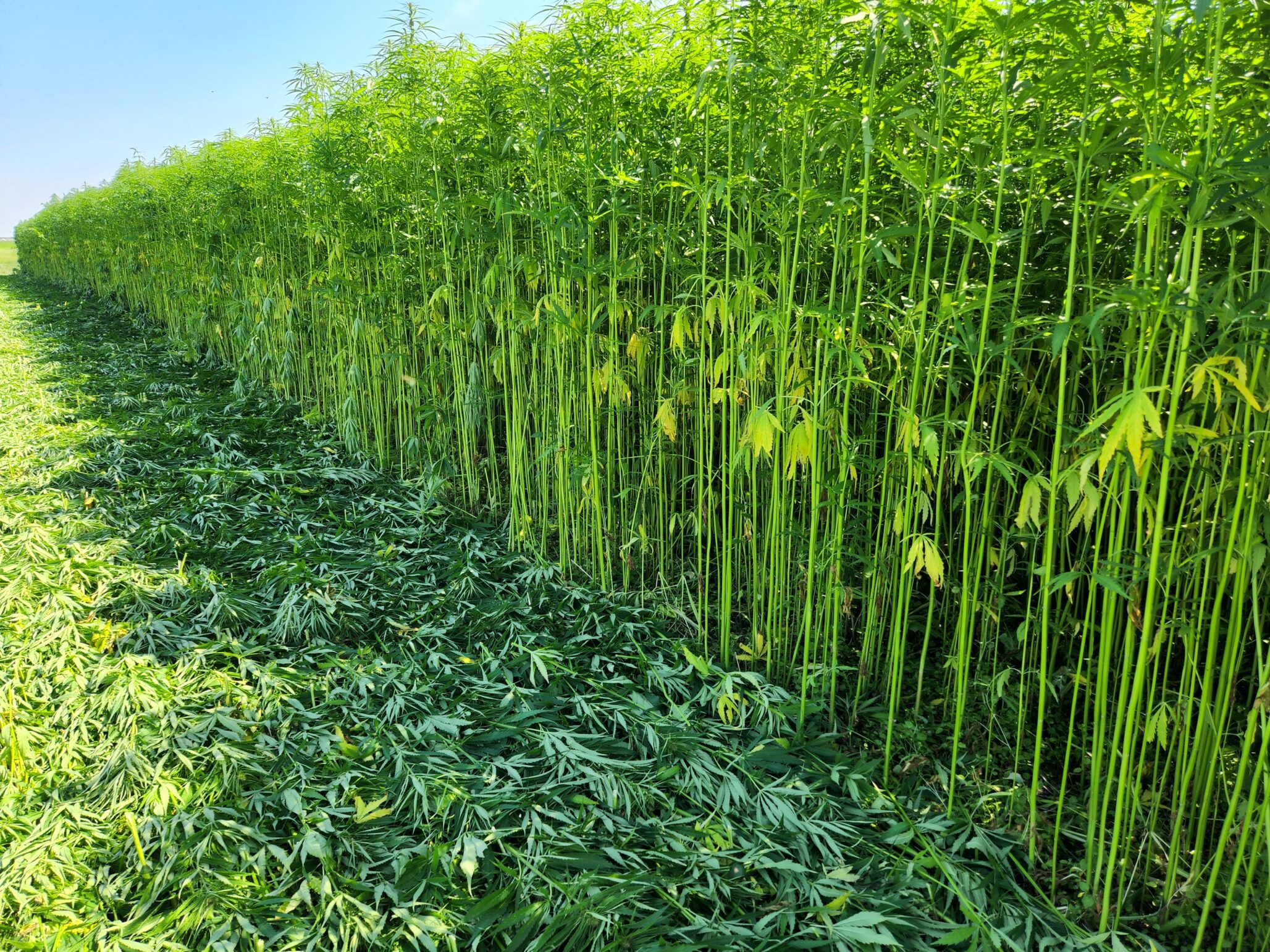Hybrid rye seed production is in flux, with KWS taking charge of its production and distribution to farmers, while FP Genetics brings in fresh varieties from Saaten-Union.
Kenny Piecharka recently took over as country lead for KWS Seeds Canada at an exciting time for the crop the company specializes in: hybrid fall rye.
Over the past decade, hybrid fall rye has made significant strides in Canada, particularly in Western Canada.
Hybrid rye varieties have captured approximately half of Western Canada’s rye acreage in the last decade. This adoption has been driven by their superior performance, especially under favourable rye-growing conditions.
These European-based hybrid varieties have delivered a remarkable yield increase of more than 20% compared to open-pollinated varieties. In optimal conditions, hybrid fall rye has become a game-changer for farmers, providing higher productivity.
“This success has paved the way for us to introduce technology that delivers tangible returns on investment for farmers here in Canada,” says Piecharka, who takes over as KWS country lead for Herman Wehrle.
“At the same time, factors like reduced inputs and time savings further enhance its appeal, offering farmers improved efficiency and performance.”
Unlike open-pollinated rye, hybrid rye results from controlled crossbreeding between two distinct parent lines. This deliberate hybridization introduces genetic diversity and enhances desirable traits.
Hybrid rye was first introduced to Canadian farmers around 10 years ago and was brought to Western Canada on a trial basis. It was immediately successful, showing a consistent 30-35% yield increase over conventional rye.
The development of hybrid rye varieties was pioneered by KWS Cereals in Germany in 1986. Recognizing the crop’s long growing season and efficient use of nutrients and water, KWS partnered with FP Genetics to bring these hybrids to Canada in 2014.
In 2015, support for the full registration of Brasetto and Guttino for Western Canada was established, along with the interim registration of KWS Bono. This marked a significant step in making hybrid rye a viable option for Canadian farmers.
There’s substantial growth potential ahead, particularly for hybrid rye to claim a larger share of the market. Currently, open pollinated rye dominates two-thirds of our acreage in North America, leaving ample room for KWS hybrids to expand their footprint.
“As a feed crop, rye offers notable health benefits, especially in swine, a fact well-recognized in Europe where 60% of the grain serves the swine market. However, in Canada, we’re just beginning to scratch the surface of this potential,” Piecharka says.
The growth trajectory could be significant, potentially increasing from less than one to as much as three per cent of total acreage. Additionally, the sustainability advantages rye brings are increasingly valued, with Europe witnessing it as the sole cereal seeing acreage growth. Canada may follow suit, he adds, especially with the emphasis on reduced herbicide and nitrogen use.
“Currently, yield remains a primary driver for farmers, but there’s an ongoing effort to tap into untapped markets, providing farmers with a more lucrative cash crop alternative,” he says.
Moreover, factors like drought and climate change are reshaping the agricultural landscape, potentially favouring winter cereals like rye, particularly in regions prone to harsh winters and shorter growing seasons.
“Last year’s drought in the West highlighted rye’s resilience, outperforming spring cereals in challenging conditions. As the climate changes, rye’s role could become even more significant, especially in mitigating the impacts of climate variability,” Piecharka adds.
New Partnership to Expand Availability of Hybrid Rye
KWS’s initiative to oversee its own production and distribution to farmers has given way to FP Genetics’ introduction of new varieties sourced from Saaten-Union, a prominent European provider.
Recently, FP Genetics and SeedNet have collaborated to offer these Saaten-Union varieties to Canadian farmers.
“I’d describe the growth of hybrid rye as steady. It’s important for a smaller crop like this not to experience explosive growth without robust marketing strategies in place, as that could lead to undesirable price volatility,” says Nathan Penner, director of commercialization for FP Genetics.
“Over the past decade, we’ve witnessed consistent expansion, with hybrid rye capturing up to 50% market share within Canada. This growth trend signals farmers’ genuine interest and belief in the potential of the product. Personally, I’m quite optimistic about its future trajectory.”
While he doesn’t foresee exponential growth in the near term, he believes FP Genetics’ focus on fostering sustainable growth aligns well with the market’s demands and the needs of farmers. The new collaboration with SeedNet was announced early in April and will see SeedNet to focus on delivering high-quality seed, while FP Genetics takes the lead in marketing and market development activities.
“In our discussions with SeedNet, we’ve found a wealth of knowledge and expertise in seed production, processing, and marketing, areas where they excel. On the other hand, we’ve been able to share insights we’ve gleaned from our focus on the grain market, while they bring their expertise from the silage side, creating a perfect blend of strengths. It allows us to pool our resources and expertise to serve farmers better,” Penner says.
Moving forward, FP will continue to evaluate new hybrid rye varieties through its extensive trial network across Western Canada. This isn’t just limited to hybrid rye; they’re always on the lookout for innovations in wheat, barley, oats, and peas as well, he notes.
“Our focus remains on bringing new, superior varieties to market and enhancing our marketing efforts, not only for SeedNet but also for ourselves, with an eye on retail channels.”

The Future
Rye, along with its hybrid counterparts, is garnering significant favour among millers and distillers, particularly in the United States, as they strive to promote their products as sustainably produced. The qualities of rye as a cover crop, its capacity to enhance crop rotation diversity for farmers, and its resilience in the face of changing climates all bolster its sustainability profile, Penner notes.
Traditionally, distillers have faced challenges with the variability of rye crops they procure. However, hybrid varieties address this concern by aligning rye closer to the consistency observed in other cereals. The appeal of hybrid varieties to distillers lies in their ability to deliver a consistent crop, reducing the need for adjustments to processes and equipment.
This trend is gradually broadening the farmer base for rye. While there may not be a significant expansion in acreage, the increased yield from hybrid varieties translates to more cultivation of high-quality rye grain, fostering a burgeoning community of committed rye growers, Piecharka says.
“A notable emerging market for us in Canada is ethanol. Rye fits well into the ethanol industry for a couple of reasons. Firstly, its commodity price aligns favorably, and secondly, its carbon footprint is superior to other options,” he says.
“Rye’s cultivation requires less water, nitrogen, and pesticides, resulting in a more favourable carbon equation.”
For KWS, one of the significant challenges revolves around the lack of institutional support typically seen with crops benefiting from checkoffs and extensive public backing.
“As we expand, we’re also expanding our team, focusing particularly on market development, with an eye on the European feed market. Interestingly, in Europe, a substantial 60% of our hybrid rye finds its way into animal feed, whereas in Canada, aside from silage, its use in feed is relatively minor. Here, the distilling and milling sectors hold more sway, with livestock feed consumption taking a back seat compared to Europe,” Piecharka says.
With advances in agronomics, Penner is confident hybrid fall rye will enjoy even greater adoption.
Hybrid rye offers numerous advantages for farmers, but meticulous planning, attention to detail, and adaptation to local conditions are key to realizing its full potential, he says.
“We’re essentially asking these plants to endure Canadian conditions for about 11 months, from the time they’re sown to when they’re harvested,” he adds.
“It’s quite a demand, especially considering the variability across Canada and the weather conditions each year. So, it’s crucial to have than plan, starting with the pre-crop. This sets the tone for the entire crop cycle.”













